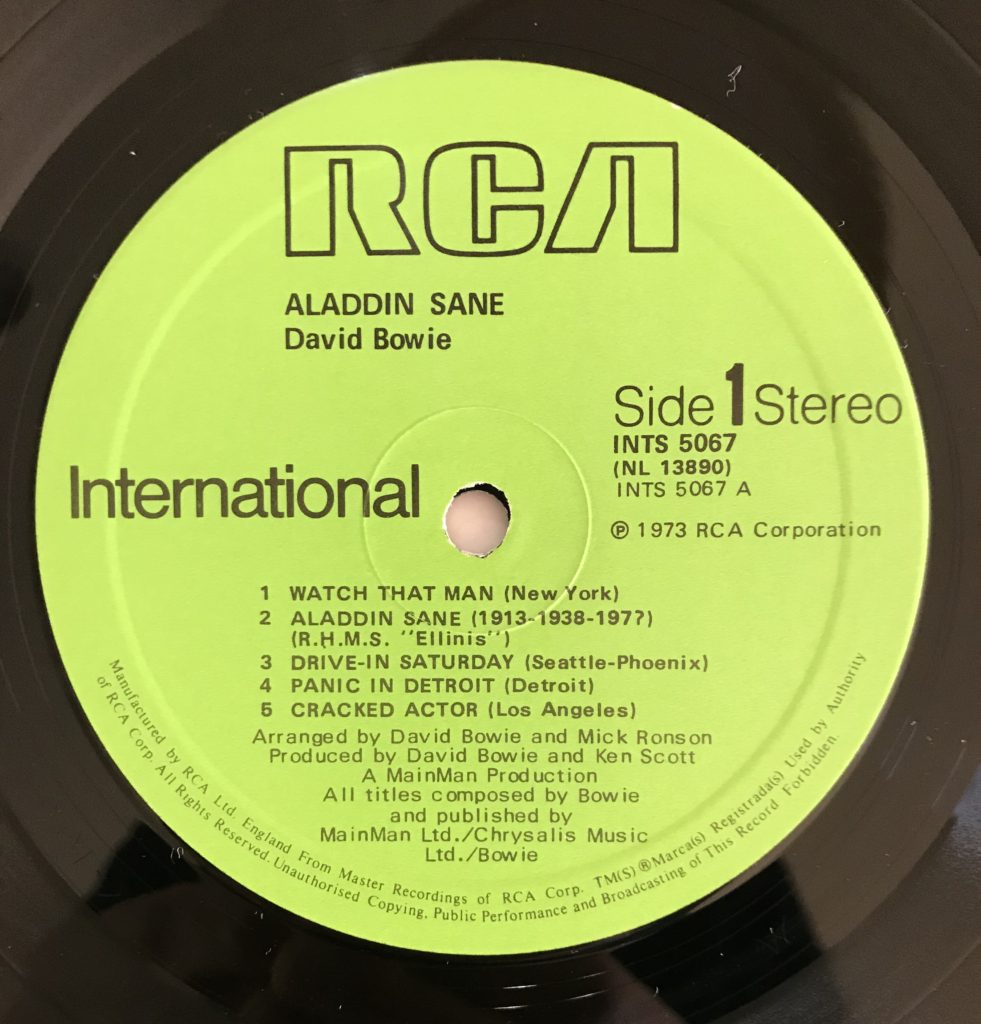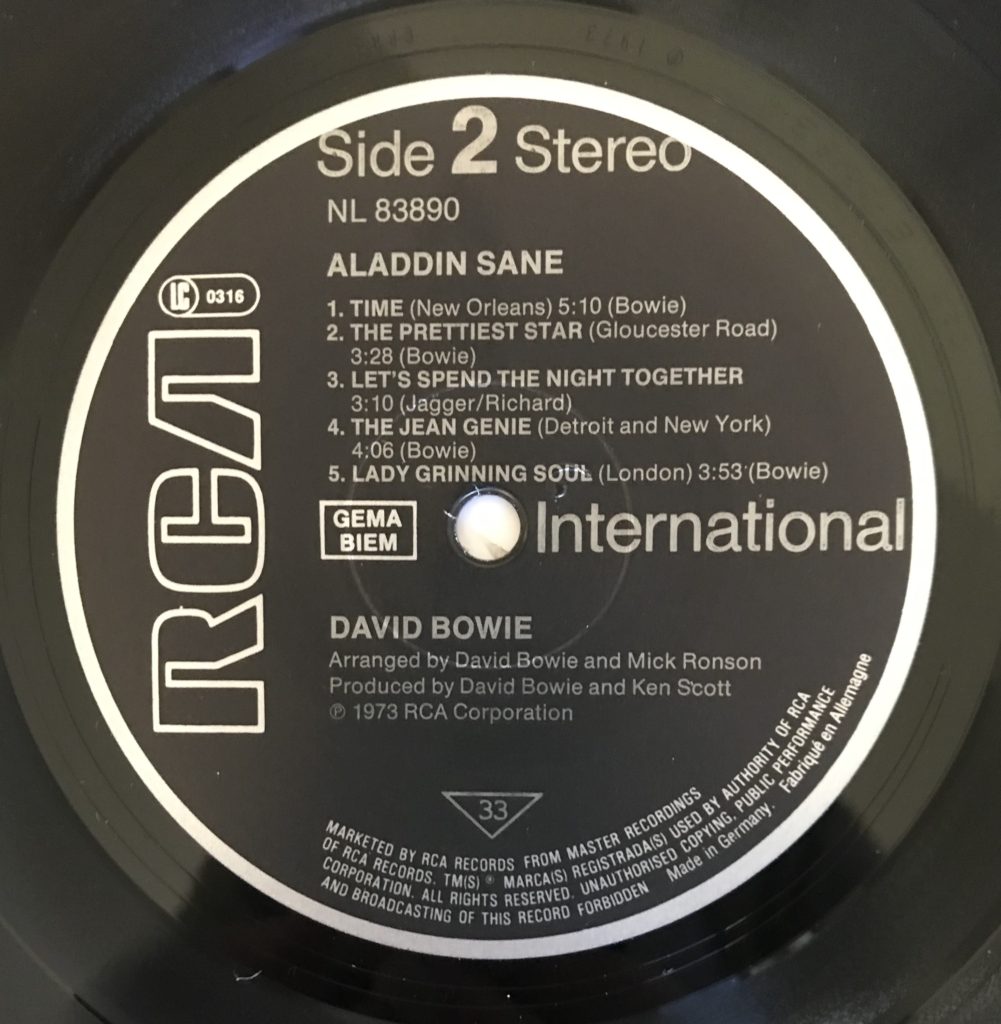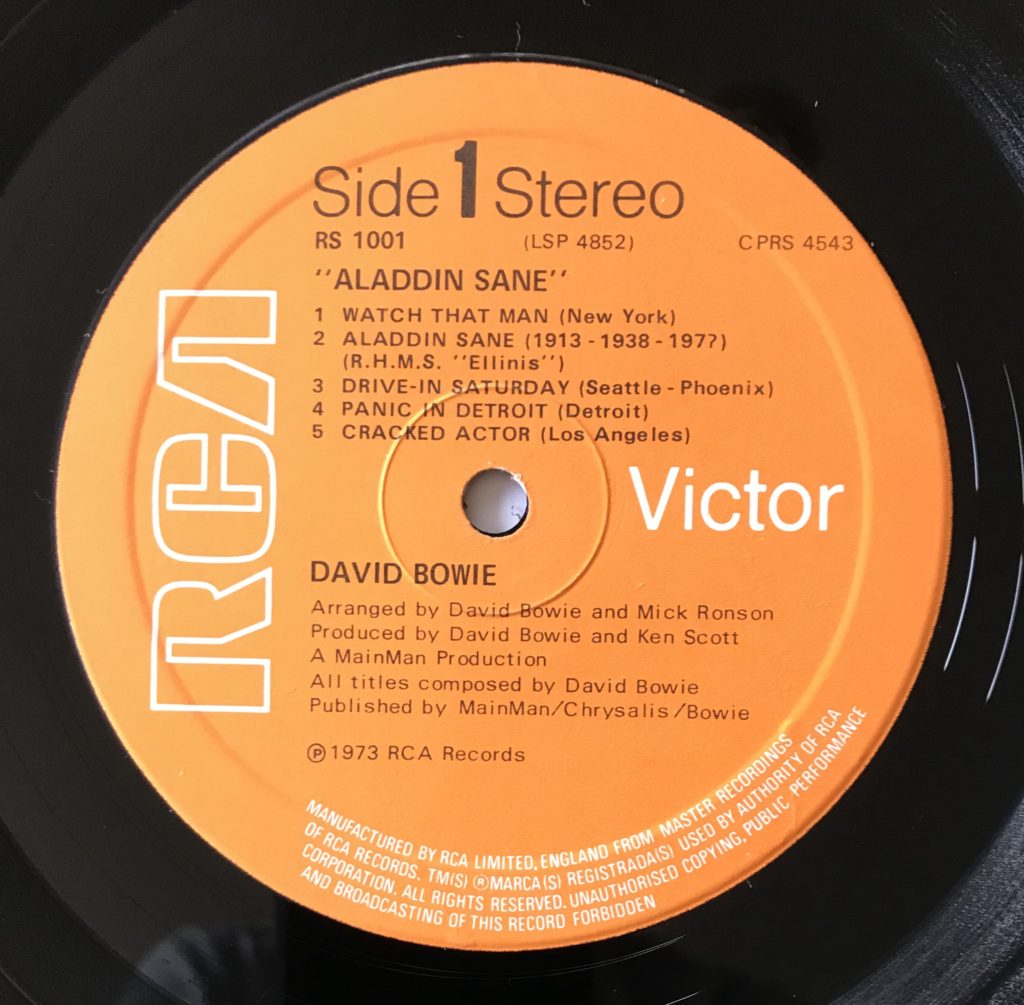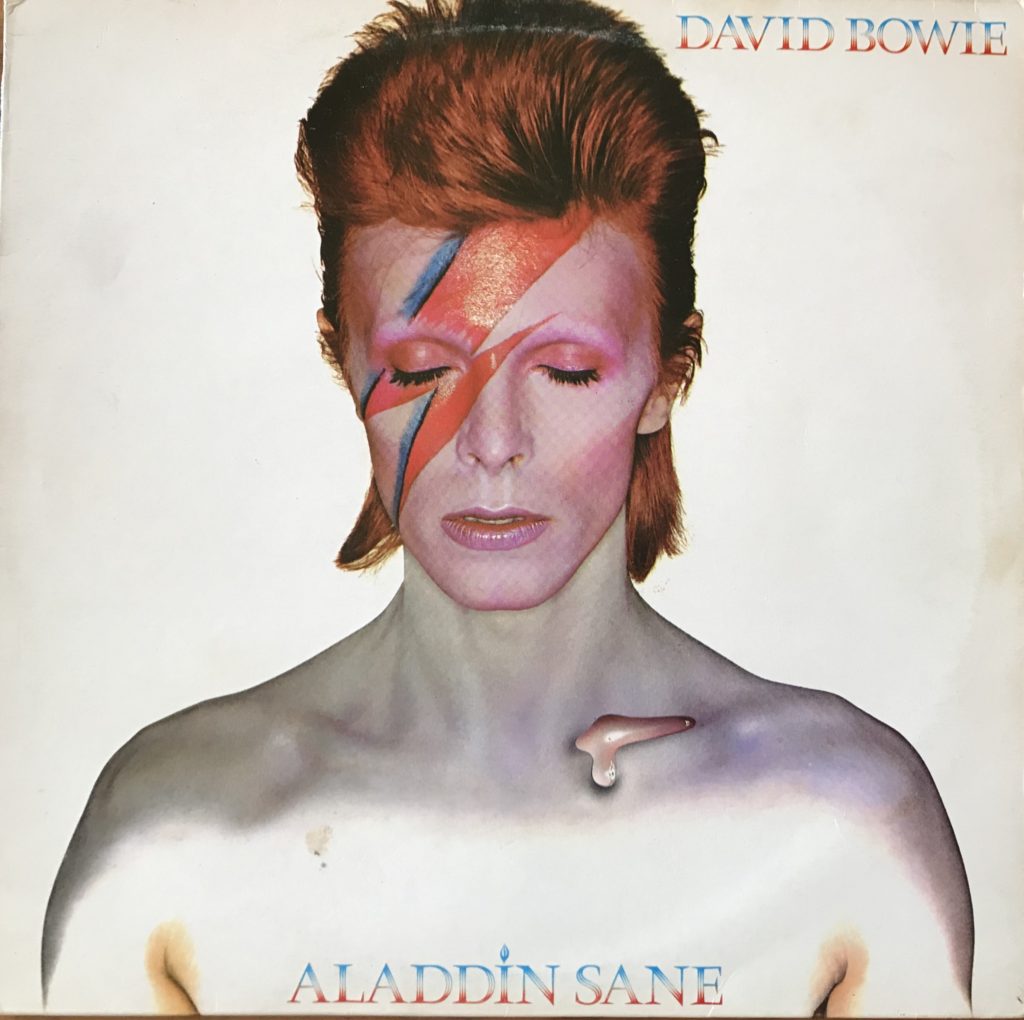The mastering engineer plays an essential role in bringing an album to the marketplace by taking an artist’s work on tape and making it available to the listener on vinyl. But the engineer’s role can go well beyond this function. In fact, the person who cuts the lacquer from which the metalwork will be made and the records pressed can add a substantial layer of interpretation to the artist’s work.
In the case of a major artist whose records have been in and out of print for a long time, several different mastering engineers may have placed their “stamps” on those artists’ work by re-cutting new lacquers for each “new” reissue. In each case these “new” versions are akin to different lenses through which the artist’s vision is projected to the listener.
Recently I acquired my 5th copy of David Bowie’s Aladdin Sane, an under appreciated album whose status in his canon, arriving on the heels of his towering masterpiece, The Rise and Fall of Ziggy Stardust and the Spiders From Mars, arguably belies its greatness. Aladdin Sane has never been my favorite Bowie album, but listening to different versions and finally finding a copy that resonated with me dramatically elevated my regard for it. In the process I also gained a greater appreciation for the work of the various mastering engineers who over the years have sought to bring the album to life.
My first copy of Aladdin Sane was one of the more sought after green label pressings from RCA International in the UK, remastered and released in 1981. There are a few different versions of this green label version and, having parted with this copy several years ago, I don’t recall which one of them it was.

One of these green label versions was remastered by Denis Blackham, AKA “Bilbo,” (his runout signature). I have never heard this version, but I would expect it to be good. I have copies of his remastered versions of Ziggy and Hunky Dory and they are both excellent. I’m not sure if the green label versions that do not display his signature are still his mastering, but they may be. At one time I owned 2 green label versions of Hunky Dory, one with Blackham’s “Bilbo” and one without it, and they both had the wonderfully full and “tubey” bottom end that I’ve found to be a defining feature of all of the green label Bowie albums I’ve owned, including Aladdin Sane.
But what I’ve found lacking in the green label Bowie pressings, at least the “non-Bilbo” ones, is a clarity and transparency that elevates any album, and that Aladdin Sane greatly relies upon to properly convey the music on it. As I recall now, this was why I decided to sell my first green label copy. I had just gone through a series of errors with a seller in the UK that ended with me buying a German reissue, also from 1981. That copy managed to impress me enough that I decided to sell the green label.

This German black label pressing sounds dramatically different from the green label. The sound is clear, sharp and electric, and it gave the music an edginess and intensity that I find very appealing. The vocal presence on this copy is wonderful, with the backing vocals placed clear and breathy at the back in the soundstage.
Aladdin Sane was co-produced by Bowie and Ken Scott, who also produced Ziggy. Ken’s productions often feature a complex assortment of instruments and vocals occupying a large, open soundstage. Scott’s production is clearly on display with Aladdin Sane. It is a wildly flamboyant and theatrical album with songs that oscillate between the smooth and sensual “Lady Grinning Soul” and “Aladdin Sane” to the gritty, grungy “Cracked Actor” and “Jean Genie”.
This black label version seemed to have the transparency to bring each of these songs to life with clarity, delicacy and presence, but I wondered if the sound wasn’t almost too clear, even bordering on overly sharp. I left the record alone for a while, planning to revisit it later after making some system changes.
When I did get back to Aladdin Sane, I found the mastering on the German reissue a too dry, and while I wouldn’t go so far as to say it lacked bass, I missed the big, “tubey” low end of the green label. I decided I still needed to hear some other versions.
Not long after, another green label UK pressing came up for sale at a great price and I bought it. This copy impressed me immediately with its big, full bass. Sometimes records with a lot of bass may seem to lack transparency because they require more volume to reveal themselves, and sometimes a lot of bass on a record be overwhelming when played at high volume. As my system has gotten more revealing and better at controlling the lower frequencies, these records have tended to sound better to me upon further listening.
Nevertheless, even though I was enjoying this green label copy, I couldn’t decide if it improved on the black label. The former had the size and weight I wanted, the latter the clarity and transparency. I decided to keep both and go back to them periodically to reassess their relative merits.
Repeated listening to each of these versions of Aladdin Sane has lead me to ask this question – what sound is the right sound for the album? It’s clearly big and bold material, but it has some subtle textures and soft delicate features. Each of the copies I had highlighted some of these different features, but neither gave me everything.
Meanwhile, an earlier UK reissue on the orange RCA label I had on my want list came up for sale. I bought it, and when it arrived and I got it cleaned, one spin told me this new copy of Aladdin Sane might finally be “the one.”

Reissued and released 1976, this orange label UK pressing was remastered by Dave Tucker at RCA (one of his signatures “Dave” is in the runout). Dave also mastered versions of Bowie’s Young Americans and Heroes, neither of which I’ve heard. Dave’s version of Aladdin Sane is the complete package – big, bold and powerful while conveying all of the intricacies of music and Ken Scott’s production.
As an analogue audiophile, I live for the moments when I realize that I’m not just hearing a great copy of a record, but rediscovering the music on it. It’s copies like these, combining great music, great production, great mastering and solid pressing, that succeed in fully bringing an artist’s vision to life.
I finally feel like I’ve “heard” Aladdin Sane, and I’m loving it!
